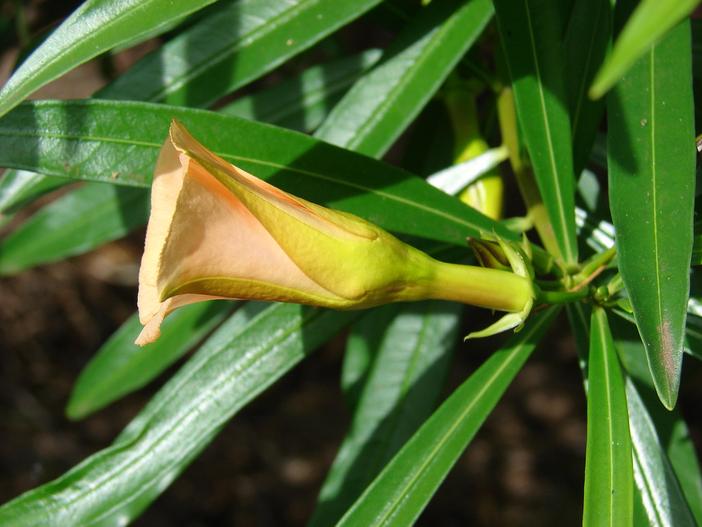Yellow Oleander
(Cascabela thevetia)
Yellow Oleander (Cascabela thevetia)
/
/

Forest and Kim Starr
CC BY 2.0
Image By:
Forest and Kim Starr
Recorded By:
Copyright:
CC BY 2.0
Copyright Notice:
Photo by: Forest and Kim Starr | License Type: CC BY 2.0 | License URL: https://creativecommons.org/licenses/by/2.0/ | Uploader: Starr Environmental | Publisher: Flickr










































































Estimated Native Range
Summary
Cascabela thevetia, commonly known as Yellow Oleander, is an evergreen shrub or small tree native to tropical and subtropical areas of Mexico, Central and South America, where it thrives in a variety of habitats including dry forest clearings, coastal woodlands, and along riverbanks. It typically grows to a height of 4-8 feet and a width of 4-5 feet. The plant is notable for its long, funnel-shaped flowers that bloom from summer to fall, ranging in color from yellow to apricot, and sometimes white. These flowers are often fragrant and appear in few-flowered terminal clusters, attracting pollinators. The fruit is a deep red-black drupe containing a large seed, which is toxic and should be handled with care.
Yellow Oleander is valued for its showy flowers and its ability to withstand drought and high temperatures, making it a popular choice for ornamental planting in gardens and parks, especially in temperate climates. It can be used as a flowering shrub, small tree, or container plant, and is often brought indoors in frost-prone areas during winter. It tolerates a range of soil types but prefers full sun to part shade and medium water availability with well-drained soil. While generally easy to maintain, it is susceptible to pests such as oleander caterpillars and can suffer from root rot in poorly drained soils. Additionally, all parts of the plant are highly toxic if ingested, which should be considered when planting in areas accessible to children and pets.CC BY-SA 4.0
Yellow Oleander is valued for its showy flowers and its ability to withstand drought and high temperatures, making it a popular choice for ornamental planting in gardens and parks, especially in temperate climates. It can be used as a flowering shrub, small tree, or container plant, and is often brought indoors in frost-prone areas during winter. It tolerates a range of soil types but prefers full sun to part shade and medium water availability with well-drained soil. While generally easy to maintain, it is susceptible to pests such as oleander caterpillars and can suffer from root rot in poorly drained soils. Additionally, all parts of the plant are highly toxic if ingested, which should be considered when planting in areas accessible to children and pets.CC BY-SA 4.0
Plant Description
- Plant Type: Tree, Shrub
- Height: 4-8 feet
- Width: 4-5 feet
- Growth Rate: Rapid
- Flower Color: Yellow
- Flowering Season: Summer, Fall
- Leaf Retention: Evergreen
Growth Requirements
- Sun: Full Sun, Part Shade
- Water: Medium
- Drainage: Medium
Common Uses
Fragrant, Low Maintenance, Potted Plant, Showy Flowers
Natural Habitat
native to tropical and subtropical areas of Mexico, Central and South America, where it thrives in a variety of habitats including dry forest clearings, coastal woodlands, and along riverbanks
Other Names
Common Names: Lucky Nut
Scientific Names: , Thevetia peruviana, Cascabela thevetia, Thevetia neriifolia, Cerbera thevetia, Cascabela peruviana, Thevetia peruviana f. peruviana, Thevetia thevetia, Thevetia peruviana f. aurantiaca, Ahouai thevetia
GBIF Accepted Name: Cascabela thevetia (L.) Lippold